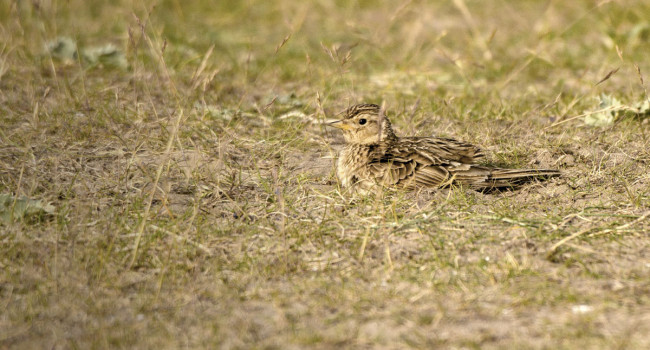Evidence for the buffer effect operating in multiple species at a national scale

Author(s): Sullivan, M.J.P., Newson, S.E. & Pearce-Higgins, J.W.
Published: January 2015
Journal: Biology Letters Volume: 11 ( part 1 )
Digital Identifier No. (DOI): 10.1098/rsbl.2014.0930
New BTO research uses data from the Breeding Bird Survey (BBS) to quantify habitat-specific trends, providing novel insights into the processes that regulate UK bird populations, and allowing population responses to environmental change to be predicted with greater accuracy.
The "buffer effect" and population regulation
Previous studies of individual species have shown that the “buffer effect” regulates populations at large scales through the mechanism of density-dependent habitat selection (Gill et al. 2001). As population densities increase, higher quality habitats become saturated, forcing individuals to move into lower quality ones. Species that are increasing in abundance should therefore increase most rapidly in low-quality habitats. This study used data from BBS to examine whether population trends of 85 species varied in a manner consistent with the buffer effect at a national scale.
Habitat trends and preferences
After calculating population trends across a range of habitats, habitat-specific trends were found to be strongly positively related to that species’ national trend. Species that increased most in a particular habitat tended to be those that had increased overall across the country. In addition, there was an interaction between habitat-specific population trend and a species habitat preference, as estimated by Jacob’s index from the proportion of sightings of each species recorded in each habitat. This means that for declining species at a UK level, losses were greatest in their least preferred habitat, whereas for increasing species; population increases were greatest in least-preferred habitats..
Local population trends driven by large-scale processes
The results were consistent with predictions from the buffer effect, and show how this process is an important driver of population trends for many species at large scales. This highlights an important message for conservationists; that the most important driver of population trends at an individual site may be a large-scale process rather than the result of local environmental changes. It is therefore important to consider the wider context when making management decisions in response to species population changes. However, this study showed that a great deal of variation in trends between species and habitats could not be explained by the buffer effect alone, and were probably caused by habitat-specific environmental changes. Understanding the mechanisms underpinning these environmental changes will therefore remain an important focus for BTO research, as shown by our current Farmland Bird Appeal.
Notes
The Breeding Bird Survey is funded by the Joint Nature Conservation Committee, the British Trust for Ornithology and the Royal Society for the Protection of Birds, and relies upon the dedication of many fieldworkers to be successful. This analysis was funded through the BBS programme.
Other cited references:
Gill, J.A., Norris, K., Potts, P.M., Gunnarsson, T.G., Atkinson, P.W. & Sutherland, W.J. 2001. The buffer effect and large-scale population regulation in migratory birds. Nature 412: 436-438.








Share this page